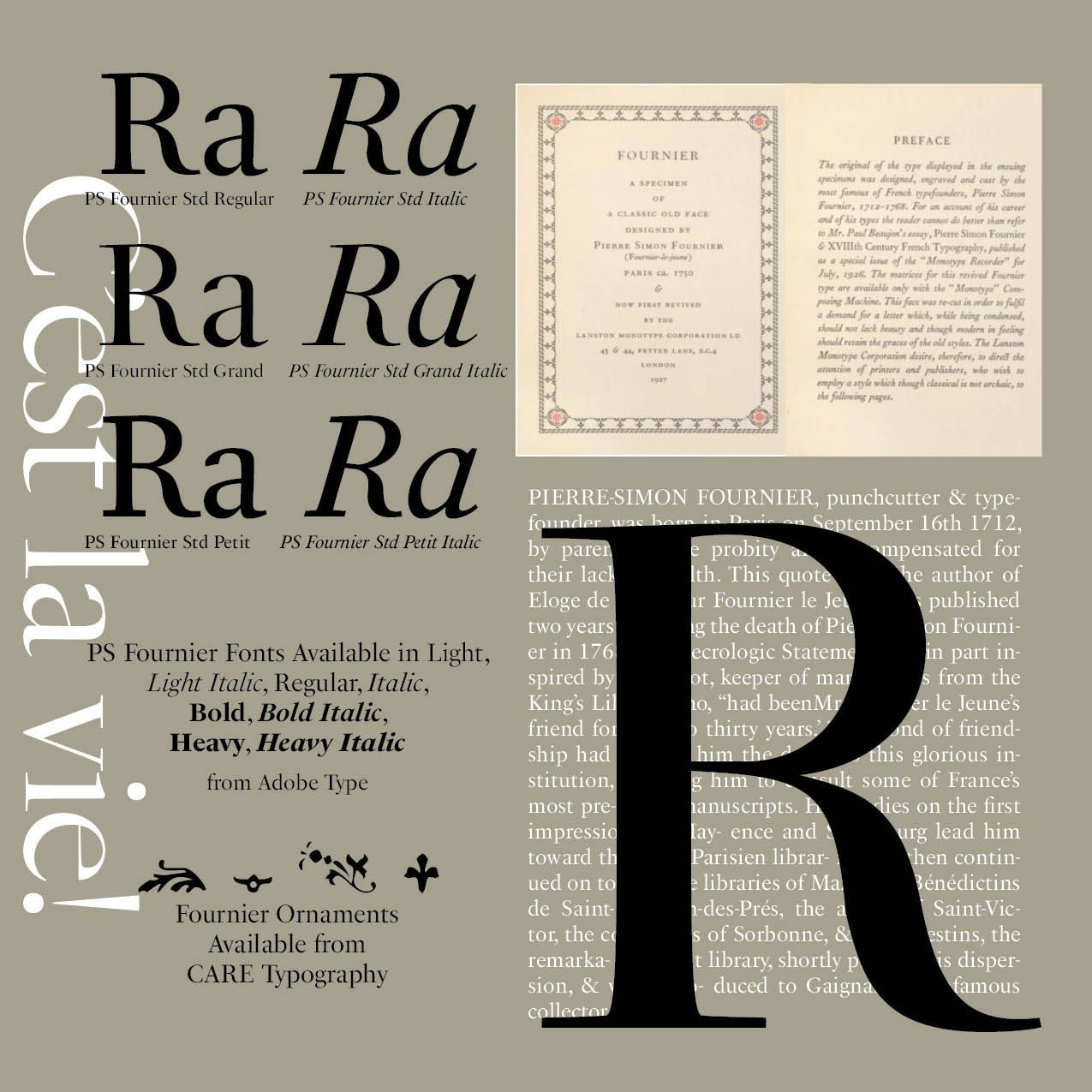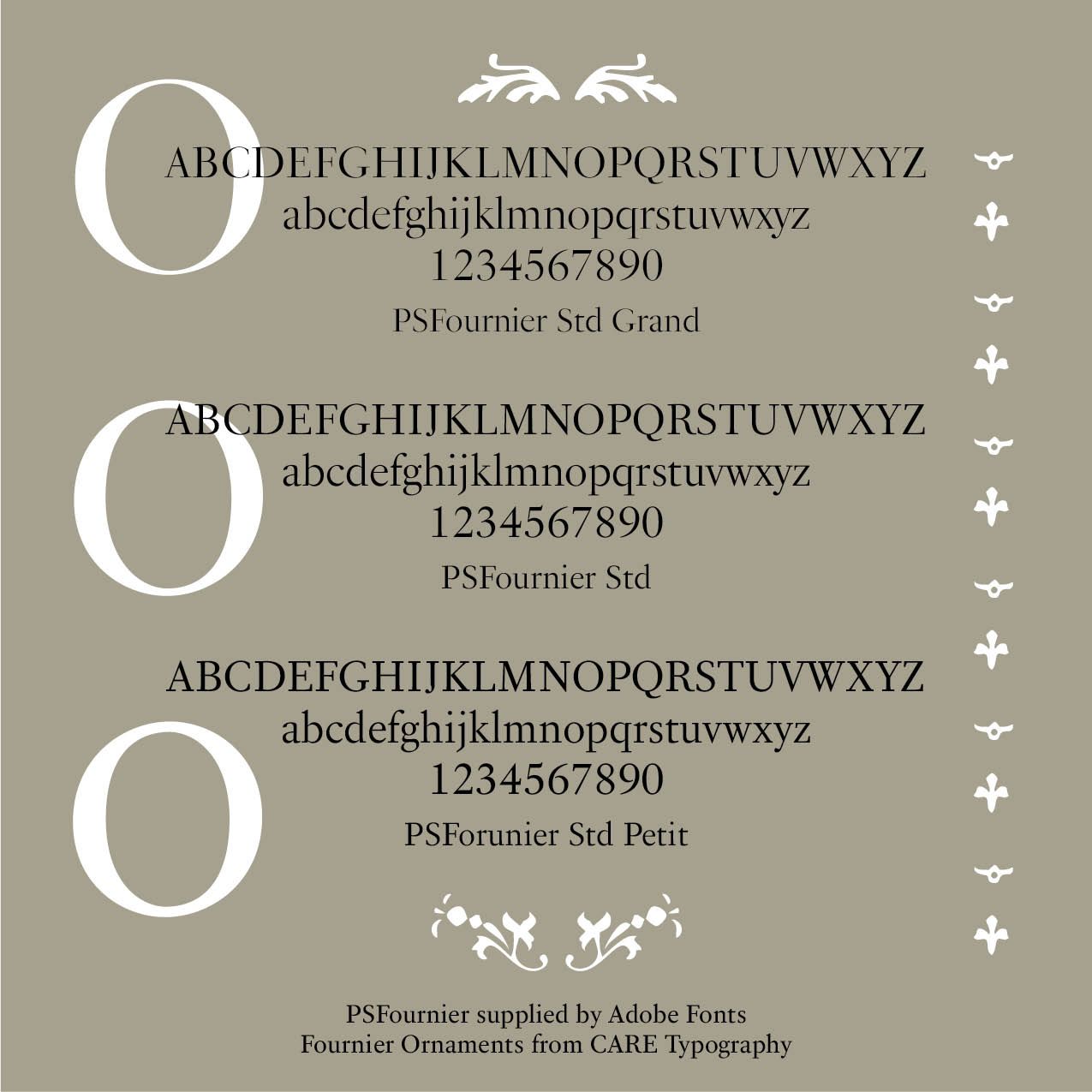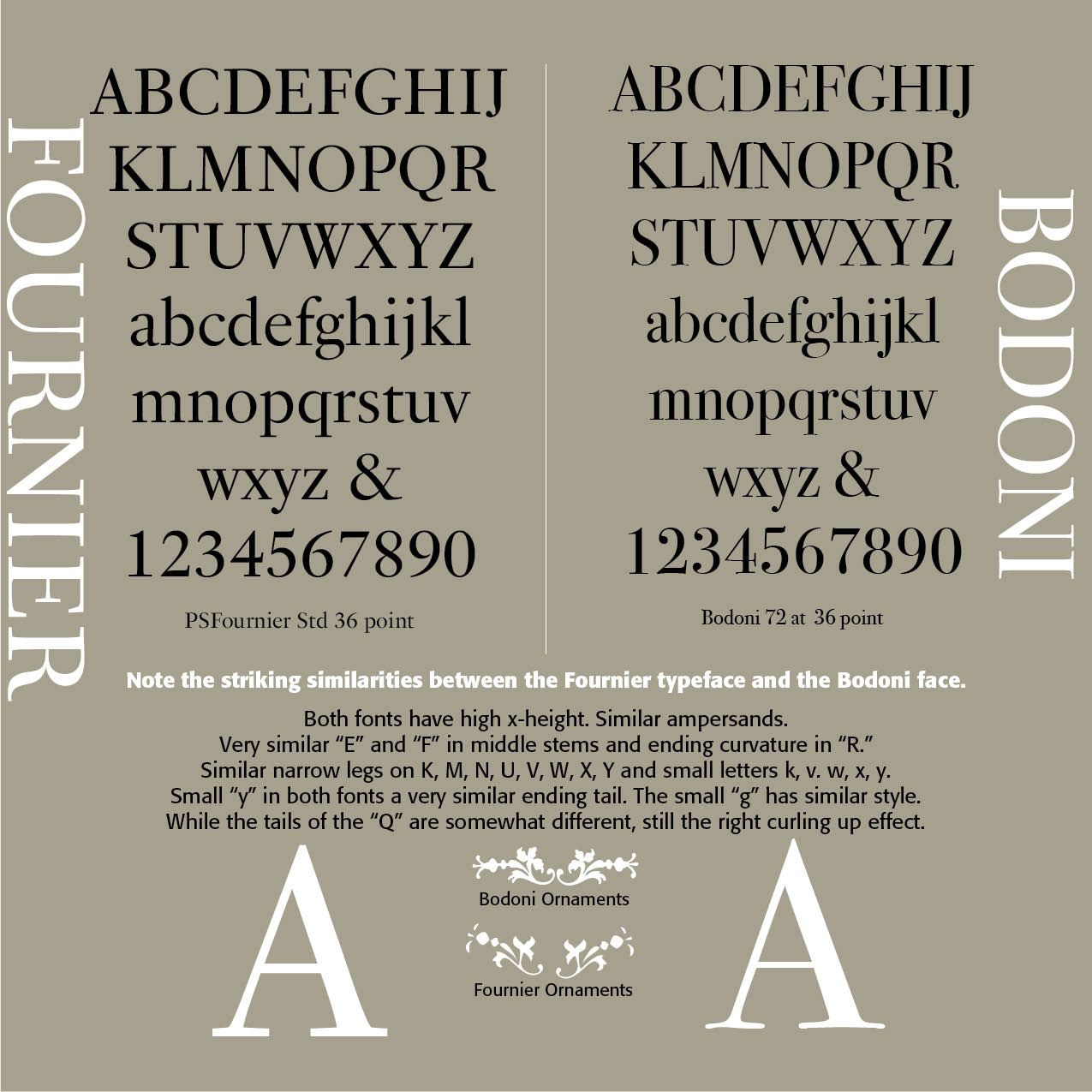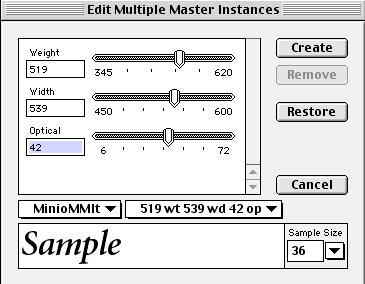Pierre-Simon Fournier
Pierre-Simon Fournier (pronounced in French for-nya [long a]) — In our history of typography series, Pierre-Simon Fournier (1712–1768) was a French typographer and type designer, renowned for his contributions to the field of typography in the 18th century. He is best known for his work in creating typefaces that reflected the elegance and sophistication of the time.
Fournier's work in type design focused on creating typefaces that were both visually appealing and functional. His types were characterized by their clarity, beauty, and legibility. The typeface Fournier is an aristocratic roman typeface (See Samples Below). It is transitional, almost modern, in character, with a distinct French flavor, but with more grace and style than traditional French oldstyle designs. This modern character influenced the later work of Bodoni.(See Sample Below)
One of Fournier's significant contributions to typography was his establishment of a typographic point system. He invented a system that standardized measurements for type, which provided consistency and made it easier for printers to produce high-quality texts. This innovation helped printers achieve consistency in their work.
Fournier published a seminal work in the history of typography titled Manuel de la Typographie (Manual of Typography, two volumes published in 1764 and 1766), which included detailed descriptions of his typefaces along with examples. This work served as a reference for printers and typographers. The Introduction gives an overview of the principles of typography. In his Classification of typefaces, Fournier emphasizes the distinction between different styles, such as Roman, Italic, and Gothic types. The manual includes practical tips for setting type, including spacing, alignment, and layout, aimed at improving the quality of printed materials. Fournier includes numerous type specimens, showcasing his designs and providing examples of how different types can be used effectively in printing. Throughout the text, Fournier discusses the historical development of typography and its evolution, reflecting on the influence of various cultures and periods on the art of type.
Other contemporaries elsewhere, such as J.M. Fleischman and J. Enschedé, started imitating Fournier's style. In the 1750s, his career was at its peak. He advised royalty in Sweden and Sradinia on types, and set up a printing shop for Madame de Pompadour. He developed musical types in cooperation with J.G.I. Breitkopf in 1756. Fournier's designs influenced future generations of typographers and established a foundation for modern type design. His methods and styles contributed to the evolution of typography, leading to the development of various typefaces we see today.
Legacy: The Fournier MT family by Monotype (1924-1925) was based on the types cut by Pierre-Simon Fournier (ca. 1742) and was called St Augustin Ordinaire in Fournier's Manuel Typographique. Narcissus-Roman (1995, Font Bureau) is based on a 1745 design of Simon Pierre Fournier, and a 1921 version of it called Narcissus by Walter Tiemann for Klingspor, and was digitized by Brian Lucid in 1995. Jim Spiece's version is called Narcissus SG. In 1768, he designed an ornamental all caps face, which Peignot produced as Fournier le Jeune. More elaborate caps were added by ATF in the 1920s, and the current digital version by P22/Lanston, also called Fournier le Jeune, is based on that [see LTC Fournier Le Jeune]. Alan Jay Prescottcreated APT New June (1996) based on Fournier le Jeune. In 2007, Tjorbjörn Olsson (T4) created Museum Fournier, inspired by a set of Rococo capitals designed by Pierre Simon Fournier le Jeune, ca. 1760. The Castcraft version of Fournier is called OPTI Fourquet. Joshua Darden's Corundum Text (2006) and typeface Griesshammer's free font Source Serif (2014, Adobe) are also based on Fournier. The ambitious PS Fournier (See Below) (2016, Stéphane Elbaz) is perhaps one of the best digital revivals. At B&P Swiss Typefaces, François Rappo published New Fournier (2011) based on the typography of Pierre-Simon Fournier. It comes in 24 styles.
Overall, Pierre-Simon Fournier's impact on typography is significant, as he helped to shape the standards of type design and usage in the 18th century, leaving a lasting mark on the field.
(ChatGPT and https://luc.devroye.org/fonts-37262.html)



Successful Layout & Design



